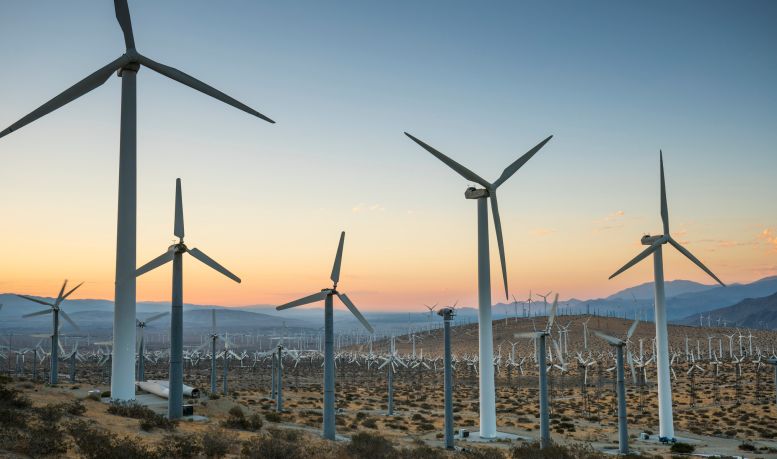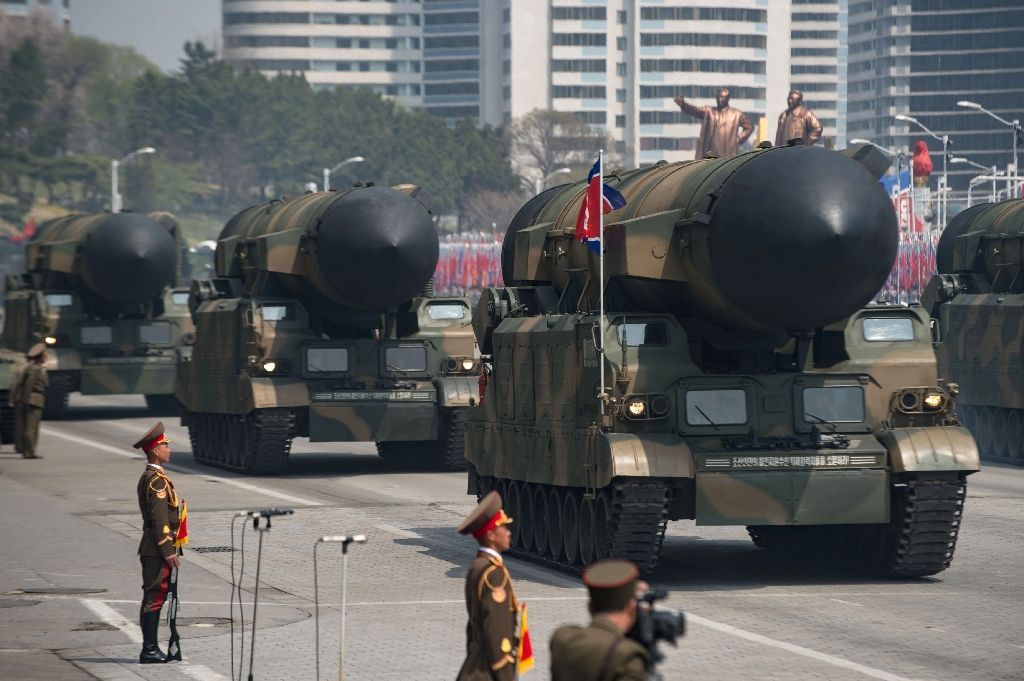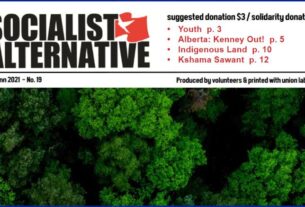Jonas Brännberg is a member of Socialistiskt Alternativ (ISA in Sweden).
The gap between what needs to be done and what is being done is widening
On March 20, the IPCC, the UN’s climate panel, presented a summary report of the last 8 years of climate research. 50,000 scientific reports form the basis of the “unequivocal” conclusion that climate change is caused by humanity, that serious impacts are already here and that pace of reducing emissions is far too slow. But the report also delivers some hope: the time, technology and resources exist to turn the development around. From that socialists draw the obvious conclusion: Our struggle is about fighting the capitalist system that stands in the way of real change.
True to form, UN Secretary General, António Guterres, accompanied the presentation of the final report of the IPCC’s sixth assessment cycle (AR6) with a number of punchy one-liners including that “the climate time bomb is ticking”, that “humanity is on thin ice, melting fast” and that the world must act at “warp speed”. António Guterres’ incendiary speech itself becomes a striking example of how no amount of speeches or scientific reports in the world can get the defenders of the current capitalist system to do what is needed. Only struggle and movements of the billions of workers and poor people who are affected by the changing climate and collapsing ecosystems can bring the necessary change.
“This report is definitely a final warning on 1.5C. If governments just stay on their current policies, the remaining carbon budget will be used up before the next IPCC report [due in 2030],” commented Kaisa Kosonen of Greenpeace (The Guardian, March 20).
Unlike previous reports, the IPCC states in its first paragraph that climate, ecosystems, biodiversity and society are interdependent and therefore climate change adaptation and mitigation is linked to ecosystem health and human well-being. 30–50 percent of the Earth’s land and water must be protected to maintain biodiversity and ecosystem services. This is indicative of the impact of recent years’ earth systems research, which has shown how capitalism has placed humanity outside the planetary boundaries for stable life on earth in a number of areas.
Many of the facts presented are not new and come from the previous interim reports in the evaluation cycle but are here put in a broader context. Compared to the last synthesis report (AR5) nine years ago, the prognosis for climate impacts is significantly worse and the conclusions are more certain. Twice as many conclusions are classified as ‘very high confidence’ in AR6. On the other hand, the aim for “high confidence” means that the report risks being conservative — important conclusions from new research might be left out or sidelined if there is not yet enough data to classify them as “very high confidence”.
The global average temperature increase is now at least 1.1 degrees Celsius above pre-industrial levels with significant regional differences, since “land areas warm faster than the ocean, and higher latitudes warm more rapidly than lower latitudes”: “The Arctic has warmed ‘nearly four times faster’ than the global average”, “temperatures in Europe have increased by more than twice the global average over the last three decades”, and “over the past 50 years, the US has warmed 68 percent faster than the planet as a whole”.
Of all the emissions from fossil fuel combustion, which is the major cause of the heating, 42 percent have occurred in the 23 years since the first climate summit in 1990. As a result, carbon dioxide levels in the atmosphere are now higher than at any time in 2 million years.
Inequality
In terms of both emissions and impacts, there are huge differences due to income and vulnerability. According to the IPCC, the 10 percent of households with the highest emissions account for 34–45 percent of emissions, while the half with the lowest emissions account for only 13–15 percent. Meanwhile, 3.3–3.6 billion people now live in areas with high vulnerability to climate change — they are 15 times more likely to die from floods, droughts and storms than those living in areas with low vulnerability. About half of the world’s population experiences water scarcity for at least part of the year. As a result, more and more people are being displaced by climate and extreme weather events. The risks of heat-related mortality, more diseases, flooding and reduced food production are much higher in some regions.
Unlike previous reports, AR6 is more detailed in terms of the regional impacts of climate change. For example, as early as a two-degree temperature increase, northern South America, southern Africa and the Mediterranean region suffer from sharply increased maximum temperatures and reduced soil moisture. “Scientific models predict extreme heat waves in India could get so bad, they would not be considered survivable by 2050 even by a healthy person resting in the shade.”
The effects of these developments in the coming years are enormous. With continued increases in emissions in the coming decades, warming would approach a catastrophic 4 degrees by 2100 (when a person born today is 77 years old) — well above the 3 degree level which, according to climate scientist Johan Rockström and others, is the threshold to the “global catastrophic risk” range, i.e. “disasters that could wipe out more than 10 percent of humanity or cause damage that significantly impairs the living conditions of a large proportion of people on Earth”.
These risks are partly confirmed by the report’s analysis of the threat to biodiversity. With a 1.5 degree temperature increase, some coastal areas in particular are at risk of temperatures that could lead to the loss of up to 10 percent of species. At two degrees, almost all of South America, Africa and the Mediterranean are threatened by similar species loss, and at three degrees, parts of the world’s oceans, North Africa and the Amazon could lose over 80 percent of their species!
At the same time, the report points to the great potential for both mitigating and adapting to climate change — especially if it does not go too far. For example, urban greening, restoring wetlands and forests are effective in reducing flood risks and lowering urban temperatures. The potential to adapt to climate change is great but depends on how much the temperature rises, there are “hard limits.” For example, 1.5 degrees is the limit on the ability to secure fresh water for small island nations and communities dependent on water from glaciers or melting snow.
Despite the effectiveness of adaptation, the gap between what needs to be done and what is being done is widening. As a matter of fact, more is being done to reduce emissions than to adapt to climate change, even if this also is completely insufficient. More money is still flowing to the fossil fuel industry than to mitigate and adapt to climate change, despite the fact that today’s fossil fuel infrastructure (without technical measures such as carbon capture and storage — CCS) result in more emissions than the total carbon budget to stay below 1.5 degrees. If planned fossil fuel infrastructure is included, the entire carbon budget for 2 degrees of warming is taken up.
Governments’ emission reduction pledges (called NDCs), which are part of the Paris Agreement, still point to a 2.5 degree temperature increase by 2100, according to the UN. However, the IPCC report shows how these pledges have not been fully implemented and if this does not change, 3.2 degrees of warming is more likely.
The conclusions from the combination of scientific reports on how the climate is affected by greenhouse gas emissions and what can be done are more positive. With rapidly decreasing emissions (peaking at the latest by 2025), the temperature increase can be kept to around 1.5 degrees, although the level may be exceeded temporarily. The longer the temperature exceeds 1.5 degrees, the greater the risk that feedback mechanisms such as melting permafrost, forest fires etc. will make it more difficult to get back down to 1.5 degrees. With rapidly decreasing emissions, the difference will be felt in just a few years, for example in terms of carbon dioxide in the atmosphere and better air quality.
Some changes cannot be stopped, or will take hundreds or thousands of years to reverse, such as sea level rise or the extinction of coral reefs. However, the pace of these changes depends largely on how emissions can be reduced. In this regard, the report warns of the uncertainty around tipping points, such as the possibility that melting ice in Antarctica and Greenland could raise sea levels much more than projected, or that the Atlantic Meridional Overturning Circulation (AMOC), of which the Gulf Stream is a part, could collapse, causing drastic changes in weather patterns and major impacts on ecosystems and people.
The report outlines the major opportunities that exist to rapidly reduce emissions. Measures that cost less than $100 per tonne of carbon dioxide equivalents reduced could halve emissions by 2030, with solar and wind energy offering the greatest potential and lowest cost. Other highly effective approaches include halting the destruction of ecosystems, sequestering carbon in agriculture, restoring ecosystems and forests, and afforestation.
Here, however, it is clear that the summary report takes into account the interests of the ruling class and the influence of big business has watered down the report and removed references to the climate damaging effects of burning fossil fuels and large scale meat production. The charts in the report show in black and white that both industrial Carbon Capture and Storage (CCS) and nuclear power have very limited potential and are expensive. Nevertheless, these methods are given an undeservedly large amount of space in the text — something that will of course be used as an excuse for continued investment in the fossil fuel industry.
The weakest parts of the report are linked to how the transition should take place, as the report mostly stays within the boundaries of capitalism. In an apparent appeasement to today’s leaders and completely unscientific the report says that “[All] countries are trying to improve the well-being of people, and their development priorities reflect different starting points and contexts.” If the current situation shows anything, it is that the ruling elite’s priority is not the people, but to increase the profits and wealth of the ruling capitalist class at any cost, resulting in the multiple crises the world is facing.
However, the report notes, that eradicating extreme poverty and providing a decent standard of living for all is entirely possible without a significant increase in emissions. And while the IPCC is “neutral” on the path forward, it notes that the scenarios that lead to deep emission reductions are linked to “global equality, climate justice and interregional income distribution”. When I read “Prioritizing equity, climate justice, social justice, inclusion and a just transition can enable adaptation and ambitious mitigation and resilient climate development,” it becomes a call to revolt against capitalism. Is there a better definition of what the current system does NOT prioritize?
The IPCC report summarizes with greater clarity and certainty than ever before the extreme severity of the climate crisis. At the same time, the research shows that the tools exist to adapt and change in time — but today’s leaders are completely unable to use them because of their loyalty to the profit-seeking capitalist system. It is only in the hands of workers and the poor that we can really start using the tools. The large corporations, banks and financial institutions that today are a complete brake on a just transition must be taken into common ownership and, under the democratic control and governance of workers and the poor, they can instead be used as a catalyst for a transformation of society according to the needs of all people and in harmony with nature. There can be no system change without socialist change.




